9 Things Fox Got Right With Their 1996 Fantastic Four Script…That We Never Got to See
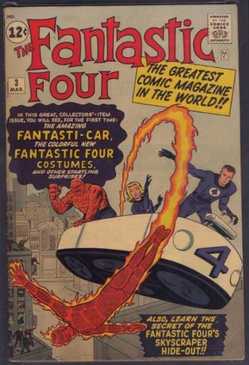 |
Most of us remember the ’90s. If you don’t, there’s a good chance you don’t understand a lot of what we talk about on this site. But if you do, think back to 1996. Batman and Robin was about to come out, ending an era and making room for our current generation of comic book movies. Marvel Studios had formed a few years earlier, but at the time they were being praised for overcoming bankruptcy by selling their characters to other studios around Hollywood, five of which went to Fox. We know how Daredevil and X-Men turned out, but at the time there was also an early Dr. Strange script, as well as an Iron Man film set to star Nicolas Cage. Fox had also successfully retained their Fantastic Four license thanks to Roger Corman, and in 1996 writers Michael France and Chris Columbus had a script that would evolve over the next decade into what we saw in theaters. France would be credited as co-writer for the 2005 Fantastic Four film, while Columbus would stay on as executive producer for the series.
The Fantastic Four films from 2005 and 2007 were fun for what they were, but that’s being generous. No matter how many redeeming qualities you can find, the misinterpretations of Doctor Doom and Galactus are inexcusable. The limited space of a modern city as opposed to a true outer space adventure was also a letdown for many fans. Of course now we have seen our first peek at Fox’s latest Fant4stic attempt, and a popular opinion seems to be: “Why can’t it be like the comics: fun, spacey, and featuring a real version of Doctor Doom?” We wanted to know if the script for the late ’90s version of Fantastic Four was any closer to the mark. Indeed, while it contained several similarities to what we eventually got, presumably Michael France’s contributions, this early incarnation featured plenty of elements that would have made the first film a little more fantastic. Here are nine of them.
1. Doom Is Pretty Close to Doom
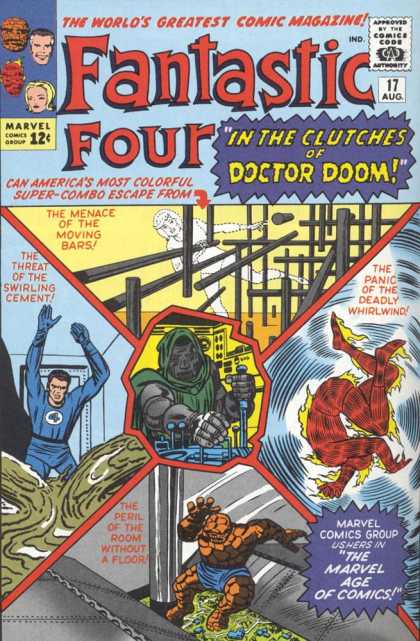 |
By the end of the 2005 Fantastic Four, we knew Doctor Doom was ruined for that particular series. What made it worse was the final stab before the credits: Doom, trapped in a box and being shipped away to Latveria. Doom fans know that this is his home turf, where he is a ruler and most powerful. But when the sequel picks up, he quickly resumes action back in the United States. That doesn’t count! He barely got off the boat before he came back here; he’s not from Latveria at all. Being shipped somewhere doesn’t make you a leader…unless you are Moses.
The ’90s Doom still has a botched origin, sharing a similar element with the film version we saw: he gets his powers by being in the cosmic ray accident with the Fantastic Four. As the Four take off in the Phoenix away from the explosion, they leave him behind because they simply don’t have a choice. We see him get burned and infused with metal, and then he crashes in Latveria. Except this time around, while he is here he actually does overthrow their government and live in a castle, complete with a throne room. And hovering Doombots. While here he masters his powers and when we see him next he’s as Doomy as we could have asked for – especially considering his rushed origin. I’ll get into his plan later, but this version of the character has some tricks up his sleeve that feel right at home in a Fantastic flick. At one point he has tiny missiles carve the Statue of Liberty into a Statue of Doom, raising a fist into the air. He is more sinister this time around as well; he makes remarks about becoming God or being in Hell, just to prove he isn’t messing around. Good stuff.
2. The Inclusion of Morlak (Crucible)
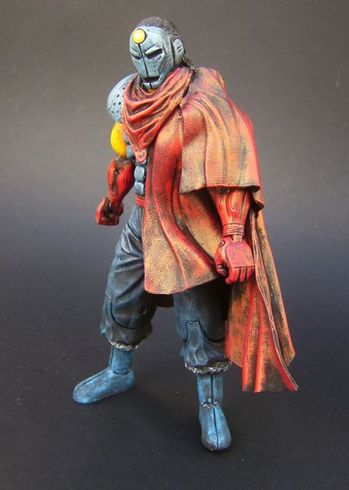 |
| via Toycutter.com |
The Fantastic Four corner of the Marvel Universe contains a rich cast of characters. Perhaps most notable are Silver Surfer and Galactus, and maybe Fox is to be commended for fitting them into the plot as early as the second film. I’ve already said their version of Galactus is inexcusable, but Norrin Radd was a highlight of the second flick. This was a pre-Avengers example of how fitting in other characters is part of what can make comic movies so fun. You never know who will pop up.
Our early script had the Fantastic Four warding off a pre-Crucible Morlak and a swarm of Enclave soldiers. Since Crucible has a suit similar to Doctor Doom’s, they didn’t have him suited up in this appearance, but his name is Marius Morlak (I couldn’t figure out if “Marius” was a typo or if they were reinventing his comic name “Maris,” due to similarities to Niles Crane’s wife) and he shows potential as a crazier-than-necessary bad guy. His fate isn’t exactly sealed, given that this is a comic movie; we only see an explosion and not a death. If there were any chance of seeing him return in the sequels as a secondary foe, that meant a good chance of getting an action figure like the custom one above. And that’s a win.
3. The Fight With Enclave
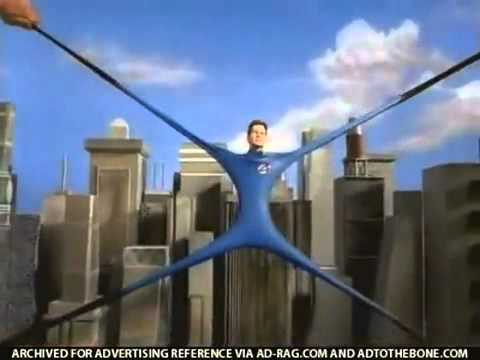 |
This scene was replaced by the Brooklyn Bridge scene in the 2005 version. Maybe it was for budget reasons, but the abandoned material is definitely a truer take on what the team is capable of. Keep in mind, this is less than an hour into the movie – the wackiness only builds from here. Enclave, led by Morlak, has planted a bomb in Times Square. The Fantastic Four are in quarantine when they learn of this attack and are forced to break out using their newfound powers. After being led to a decoy bomb, they fail to stop the explosion. Sue sees the real bomb as it goes off, and she creates an invisible force field sphere around the flames. While she holds the explosion in a fiery bubble, Reed warns her that letting go too early would cause the outside oxygen to burst into flames. Science!
Meanwhile, Human Torch is handling Morlak, who is flying around in a helicopter. As Johnny closes in on the chopper, Morlak flies over a water tower and throws a grenade inside. The water shoots up and extinguishes Johnny, who falls unconscious on a rooftop. Sue has managed to hold her fire bubble long enough to levitate it over to Reed. He stretches around it and looks to The Thing. “Can you fire a slingshot?” Thing shrugs. “Hey, I’m from Brooklyn.” He pulls Reed back with his great strength before launching the force field bubble high into the air. Unfortunately for Morlak it hits his ascending chopper, exploding away from harm. The flames rain down – directly onto the Human Torch. He absorbs the fire, rejuvenated. Thus concludes what could have been one the best sequences Fox has ever done with a Marvel license.
4. It Doesn’t Dwell on the Origin
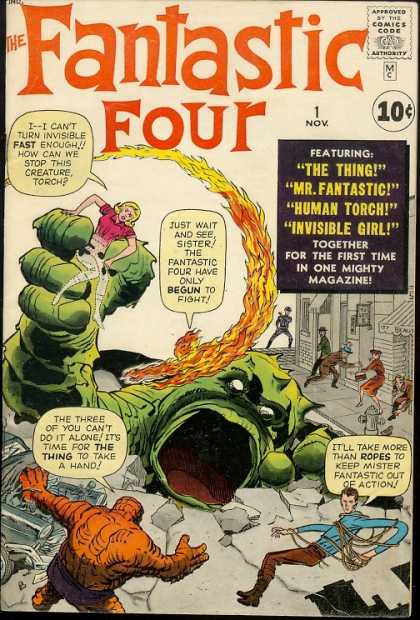 |
If the standard script page to screen time ratio of 1/1 holds true, this film would have been just shy of two hours at 112 pages. We do spend quite a bit of time seeing the origin take place, but around page 53 we jump forward in time a bit. After that awesome slingshot scene, the four heroes become celebrities and develop themselves as a team. At this point we haven’t heard from Doom since we saw him transform in the origin explosion. We pick up months later, when the team is well established, Reed and Sue are about to get married, and Doom is master sorcerer and ruler of Latveria.
This gap is what the filmmakers decided to use between the two films. The 2007 sequel has the Reed/Sue wedding, and Doom makes his return from Latveria. This time shift was apparently always intended as a way of moving the characters forward, but it’s stronger the earlier it’s placed. While our beginning wasn’t exactly true to the characters, the script deserves credit for quickly taking the audience to a straightforward battle between an established Doom and team of Four.
While we’re on the topic, check out the above cover for the very first issue. Their origin was never a selling point; it was the fact that they were a team with crazy abilities who fought monsters and looked like it was a lot of fun to read. Because they were, and it was.
5. Ben Gets a Better Arc
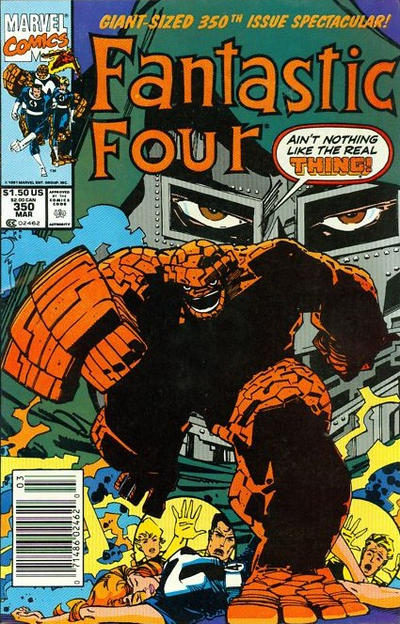 |
Since Doom was on board with the Four during the origin explosion, there had to be the scene where we see him being evil right off the bat, so we know he is our bad guy. Doom stands by and watches while Ben is zapped with the radiation. He laughs maniacally as Ben screams in pain. This gives Ben personal reasons to take Doom out later.
In both this script and the final version, the powers don’t show up until after the crew lands and gets into their daily lives again. In the movie Ben transformed and then confronted his fianc?e, while here he is actually with her when he transforms. Her reaction to the monstrosity is even more heartbreaking for Ben; it’s well-written as an intense, highly emotional scene.
In the film, Doom turns the Thing back into Ben, but in this script Ben does it himself. This allows Ben to learn to work the computer which comes in handy later, when he is the one to actually put the nail in Doom’s coffin. How does he do it? By trapping him in the nanochamber and turning him into glass. Doom shatters into a thousand pieces. Surely he can find a way back, but it reads as a final death. Obviously Ben was intended to be a standout, and perhaps killing Doom in the first film was a bit too much too soon. But a Thing-centric Fantastic Four film shows that Fox was willing to get wacky, and I like that.
6. Doom’s Plan/The Hypercane
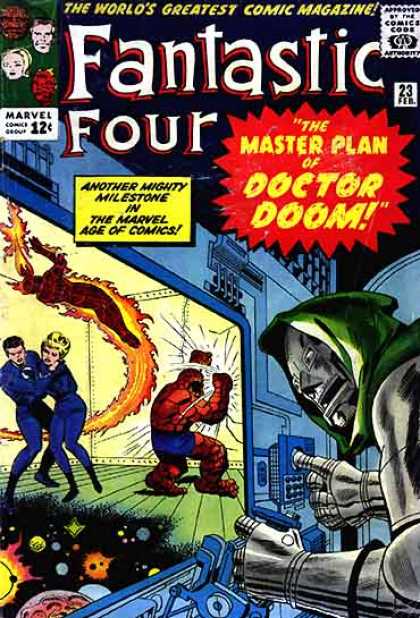 |
How wacky was Fox willing to get? This may be the craziest part in the script. By the end, Doom has full control over an army of Doombots, including a bunch of little nano-machines he has in the clouds. Being the badass he is, he has the Four contained in their own unique holding tanks. Each tank prohibits the use of powers, except for Johnny, who is continuously poked and prodded – forcing him to flame on as a reflex.
Johnny’s tube is connected to a giant boiler plate under the ocean. Each time he flames on, he heats the water above him. As the water reaches the correct temperature, a hurricane is formed. But this isn’t just any hurricane: this one is filled with the nanobots in the clouds. Doom now has full control of the storm, and as it begins to destroy the city the clouds turn into a likeness of Doom himself. Is there where the Cloud Galactus came from? Perhaps somebody was in love with an idea and refused to let it go? Either way, for Doom it’s a marvelous plan. He calls it “The Hypercane.” And nobody questions him.
7. The Adaptoid and the Doombots
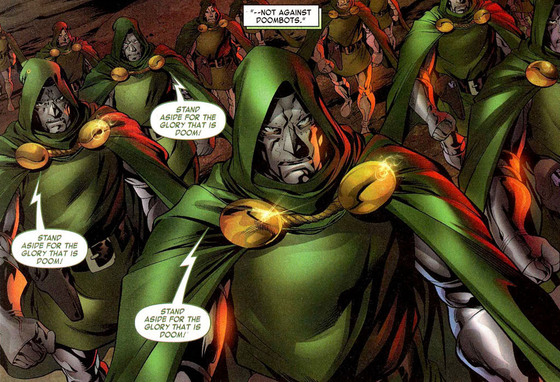 |
One of Doom’s Doombots looks like an exact replica of him, and the Four disarm it rather easy. It’s a good fakeout, though, one that plays out a little like Ash’s reveal in Alien. Ben throws a punch, the Doombot catches it. The force is enough to break Doombot’s arm at the shoulder, after which he starts laughing, buzzing, humming, and then explodes. Faux-Doom as a robot who is actually a bomb? Absolutely.
But that’s not the only ‘bot Doom employs. He makes one called the Adaptoid, capable of mimicking cell structures. Whereas in the 2007 film we had Johnny take on all the powers of the team to fight Doom, here we have Doom using a robot that has absorbed all the abilities. This sounds infinitely cooler, and the only way the team can think of to defeat it is to force it to analyze water and become liquid, forming a pool at their feet. ’90s score yet another point.
8. Reed Gets Strung Out
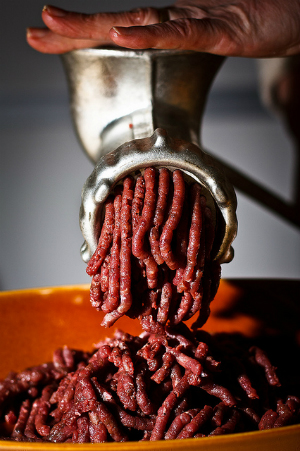 |
| Dennis Burger |
During Doom’s torture process, he squishes Reed through a giant meat grinder-like contraption. Reed starts to turn into pasta, and if the machine closes all the way he will have no choice but to separate into each of the individual strands, killing him as he thrashes like a hundred bloody tentacles.
I don’t have much to add here. This sounds disgustingly awesome.
9. The Planned Sequel
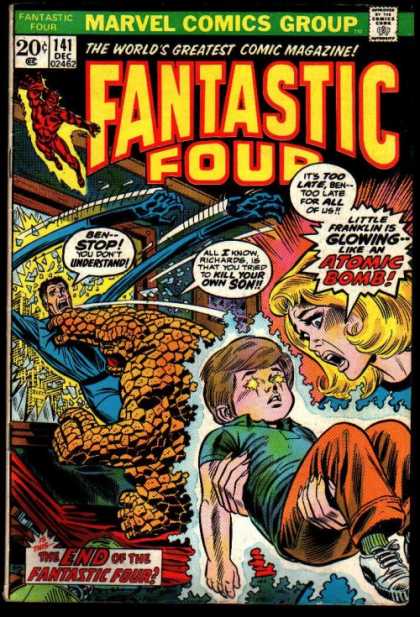 |
In the script a large part of Reed and Sue’s relationship was stress about their future and whether or not they could have regular children. After some arguments and tests and whatnot, all is well at the end when they have determined their children would be normal and they could be happy with a regular life. After the Doctor Doom-shaped storms have calmed, after the enemies have been turned into glass and water, the script declares “THE END.” However, right below that there is one final sentence: Coming Summer 2000 – “Fantastic Five: The New Baby”
Something tells me that their baby wouldn’t have been normal. Would it have been Franklin Richards? Famed son of Reed and Sue who is so cosmically powerful that even Galactus admires him? Hopefully. And if that’s the route they were going, I can’t help but think their heads were once again in the right spot. Taking Fantastic Four to the limits, getting cosmic and crazy with something like an all-powerful son who interferes with space and time. That’s way closer to what fans want than a grounded, reality based spin on the lore.
And so here we are. The flames that were once burning have become invisible, leaving only a rock hard callous. Will we be happy with the next reboot? Maybe. It’s a stretch.
Also by Bryce Abood:
7 Reasons We Don’t Need Guillermo del Toro’s At The Mountains Of Madness
8 Insane Things From the Never-Made Oliver Stone/Arnold Schwarzenegger Planet of the Apes
7 Great Moments From the Deadpool Movie Script
9 Memorable Things About Max Landis’ 436-Page Super Mario World Script
6 Ways Donkey Konga Out-rocks Guitar Hero
The 6 Best Soundtracks for Some of 2014’s Worst Movies
Comic-Con’s Big Saturday Hall H Panels, as Described by a Crazy Person
